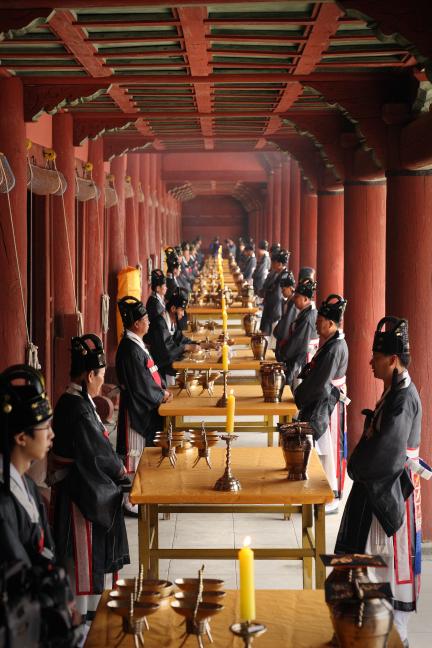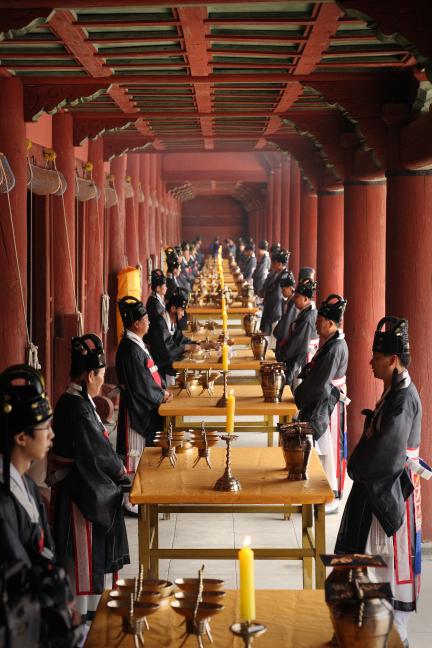종목별 검색
국가무형유산
종묘제례 (宗廟祭禮)Jongmyo Jerye (Royal Ancestral Ritual in the Jongmyo Shrine)
| 분 류 | 무형문화재 / 의례·의식 / 그 밖의 의식·의례 |
|---|---|
| 지정(등록)일 | 1975.05.09 |
| 소 재 지 | 서울특별시 종로구 |
| 관리자(관리단체) |


국가무형유산
종묘제례 (宗廟祭禮)Jongmyo Jerye (Royal Ancestral Ritual in the Jongmyo Shrine)
| 분 류 | 무형문화재 / 의례·의식 / 그 밖의 의식·의례 |
|---|---|
| 지정(등록)일 | 1975.05.09 |
| 소 재 지 | 서울특별시 종로구 |
| 관리자(관리단체) |

ⓒ 2000. CULTURAL HERITAGE ADMINISTRATION. ALL RIGHTS RESERVED.



 문화유산
문화유산


